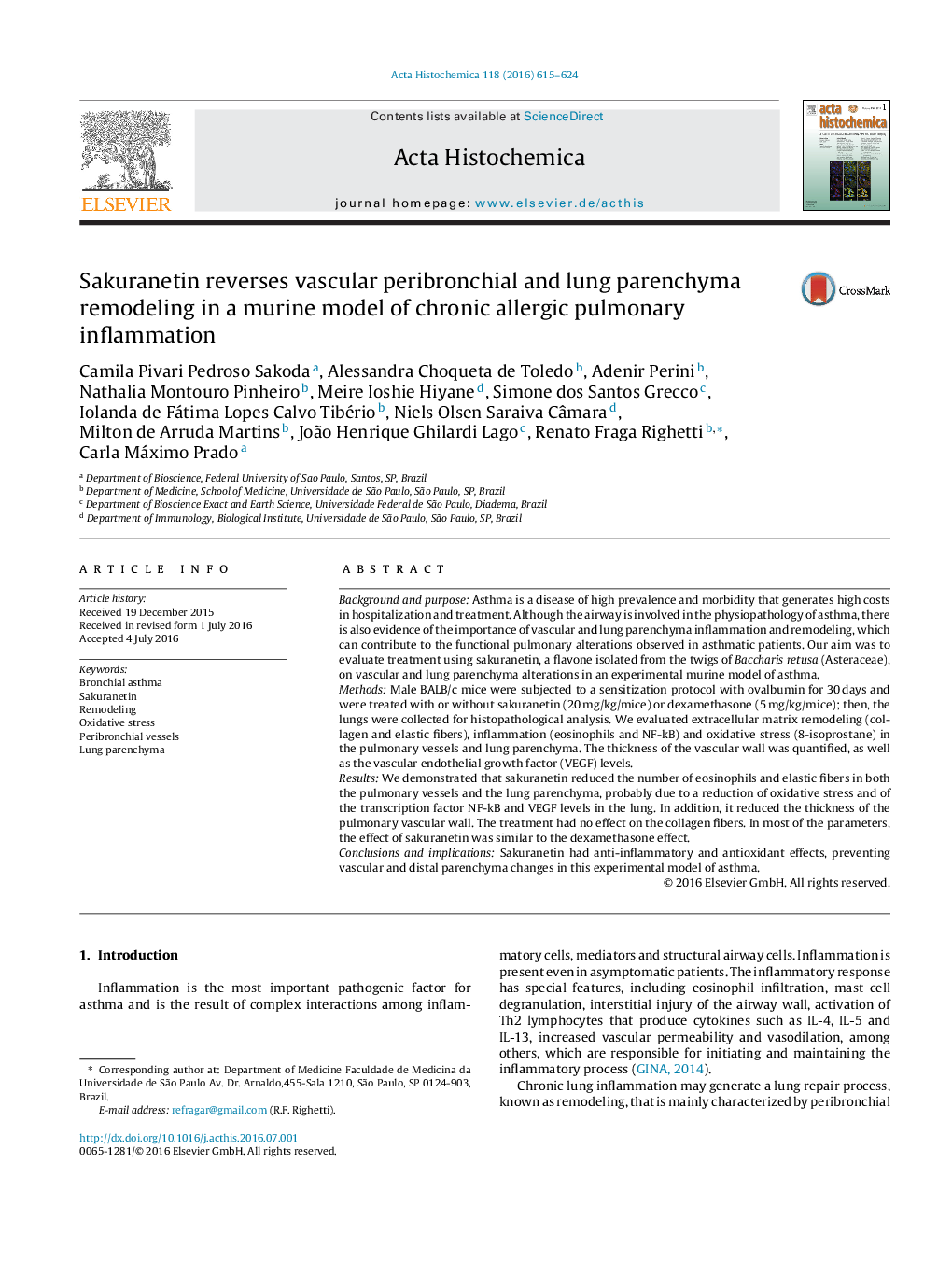| Article ID | Journal | Published Year | Pages | File Type |
|---|---|---|---|---|
| 1923290 | Acta Histochemica | 2016 | 10 Pages |
Background and purposeAsthma is a disease of high prevalence and morbidity that generates high costs in hospitalization and treatment. Although the airway is involved in the physiopathology of asthma, there is also evidence of the importance of vascular and lung parenchyma inflammation and remodeling, which can contribute to the functional pulmonary alterations observed in asthmatic patients. Our aim was to evaluate treatment using sakuranetin, a flavone isolated from the twigs of Baccharis retusa (Asteraceae), on vascular and lung parenchyma alterations in an experimental murine model of asthma.MethodsMale BALB/c mice were subjected to a sensitization protocol with ovalbumin for 30 days and were treated with or without sakuranetin (20 mg/kg/mice) or dexamethasone (5 mg/kg/mice); then, the lungs were collected for histopathological analysis. We evaluated extracellular matrix remodeling (collagen and elastic fibers), inflammation (eosinophils and NF-kB) and oxidative stress (8-isoprostane) in the pulmonary vessels and lung parenchyma. The thickness of the vascular wall was quantified, as well as the vascular endothelial growth factor (VEGF) levels.ResultsWe demonstrated that sakuranetin reduced the number of eosinophils and elastic fibers in both the pulmonary vessels and the lung parenchyma, probably due to a reduction of oxidative stress and of the transcription factor NF-kB and VEGF levels in the lung. In addition, it reduced the thickness of the pulmonary vascular wall. The treatment had no effect on the collagen fibers. In most of the parameters, the effect of sakuranetin was similar to the dexamethasone effect.Conclusions and implicationsSakuranetin had anti-inflammatory and antioxidant effects, preventing vascular and distal parenchyma changes in this experimental model of asthma.
